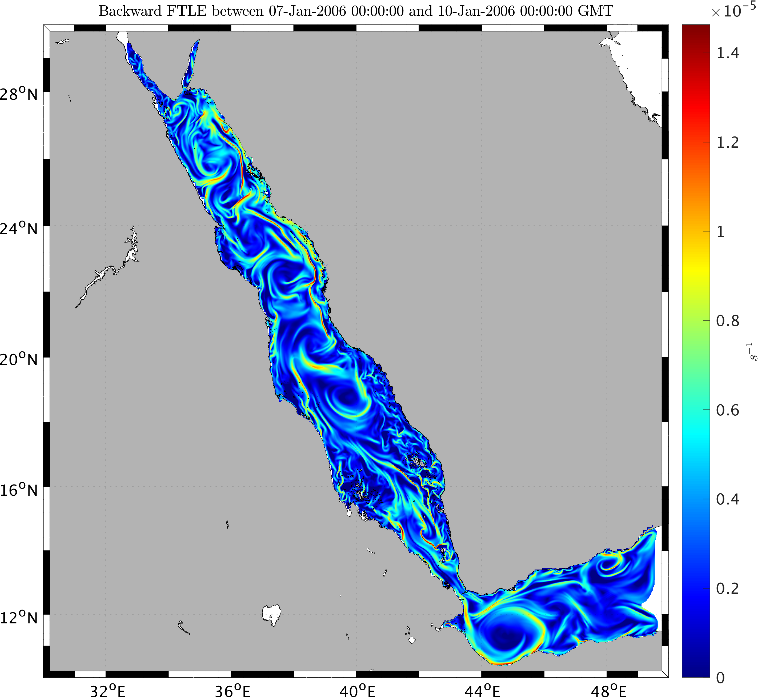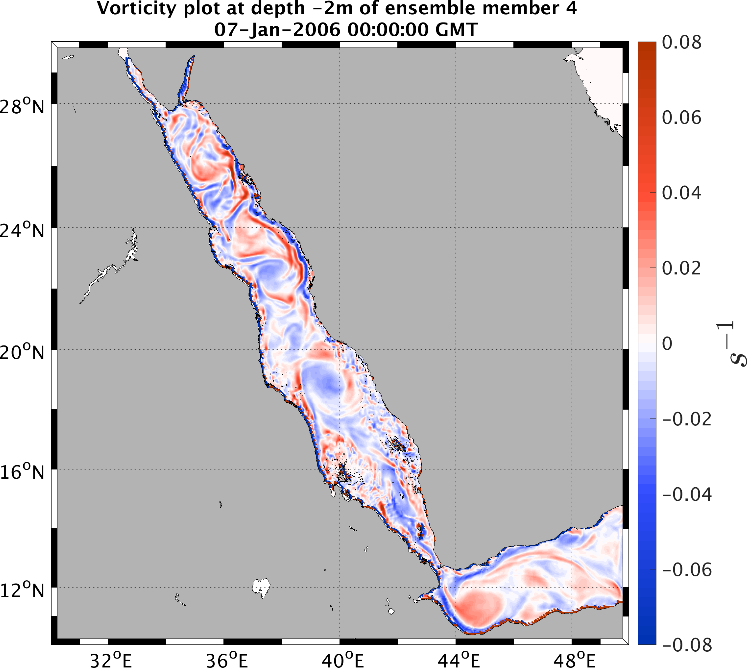Red Sea Initiative
|
P.F.J. Lermusiaux, C. Kulkarni, W.H. Ali, P.J. Haley, Jr., C. Mirabito Massachusetts Institute of Technology
|
Project Summary Ongoing MIT-MSEAS Research Red Sea Initiative Supported Publications
|

|

|
| This research is sponsored by KAUST. | |||
Project Summary
Our research focus will be the Lagrangian connectivity of marine ecosystems and sea hazards due to natural or made-made Lagrangian material transports. Specifically, we plan to further develop and apply our new theory and schemes for (i) the study and quantification of biogeochemical coherent structures and Lagrangian connectivity of marine ecosystems, and (ii) the study and mitigation of sea hazards due to stochastic advection and Lagrangian material transports including marine contaminations and spills. To do so, we will employ and improve our schemes and computational systems for probabilistic ocean physical-biogeochemical modeling and forecasting, for predicting Lagrangian Coherent Structures and their uncertainties, and for Bayesian nonlinear Eulerian and Lagrangian data assimilation. We will build upon our experiences, especially those that involved large and collaborative research. Several of our recent MIT-MSEAS methods and software will be used and further developed for the Red Sea Initiative. Our long-term approach is to utilize these known information structures, for robust and accurate Bayesian forecasting, Lagrangian transport studies, data assimilation, and optimal planning of ocean sensing.
Acknowledgments: We wish to thank Prof. Ibrahim Hoteit and Prof. Omar Knio of KAUST for their support for this project.
| Top of page |
Ongoing MIT-MSEAS Research
For the duration of the multi-year project, specific goals and research tasks are to:
- Implement and further develop our Dynamical Orthogonal equations and numerical schemes for predicting the probability distribution functions (pdfs) of nonlinear multiscale physical and ecosystem fields in the Red Sea region
- Utilize the Kaust and MIT-MSEAS ocean flow simulations to provide velocity inputs to our finite-time Lagrangian transport methods in two and three spatial dimensions
- Further develop and apply these stochastic flow-map and Lagrangian Coherent Structures methods for the study of ocean transports and their biogeochemical effects with a focus on ecosystem connectivity, and for the optimal mitigation of varied sea hazards such as marine contaminations and spills
- Exploit the nonlinear governing equations and mutual information structures for the optimal Bayesian inference of multiscale ocean fields for quantitative scientific studies, societal applications, and industrial development
- Utilize advanced visualization methods for the effective display of three-dimensional Lagrangian Coherent Structures, probability densities of stochastic ocean fields, and coral reef connectivity and vulnerability fields.
Publications
Red Sea Initiative Supported Publications
| Top of page |



